Hypothermia
ECG Changes in Hypothermia
- Bradyarrhythmias (see below)
- Osborne Waves (= J waves)
- Prolonged PR, QRS and QT intervals
- Shivering artefact
- Ventricular ectopics
- Cardiac arrest due to VT, VF or asystole
Classification of hypothermia
Hypothermia is defined as a core body temperature of < 35 °C [degrees centigrade]:
- Mild hypothermia is 32-35 °C
- Moderate hypothermia is 29-32 °C
- Severe hypothermia is < 29 °C
Bradyarrhythmias
Bradycardia is a common finding in hypothermia. Patients may manifest a variety of bradyarrhythmias:
- Sinus bradycardia (may be marked)
- Atrial fibrillation with slow ventricular response
- Slow junctional rhythms
- Varying degrees of AV block (1st-3rd)
Example ECGs
Example 1
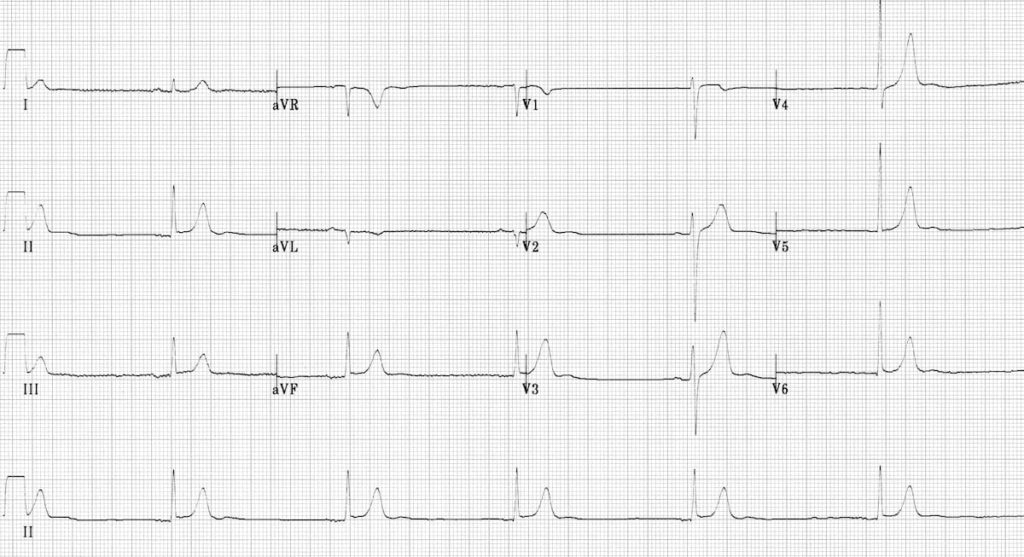
Example 2
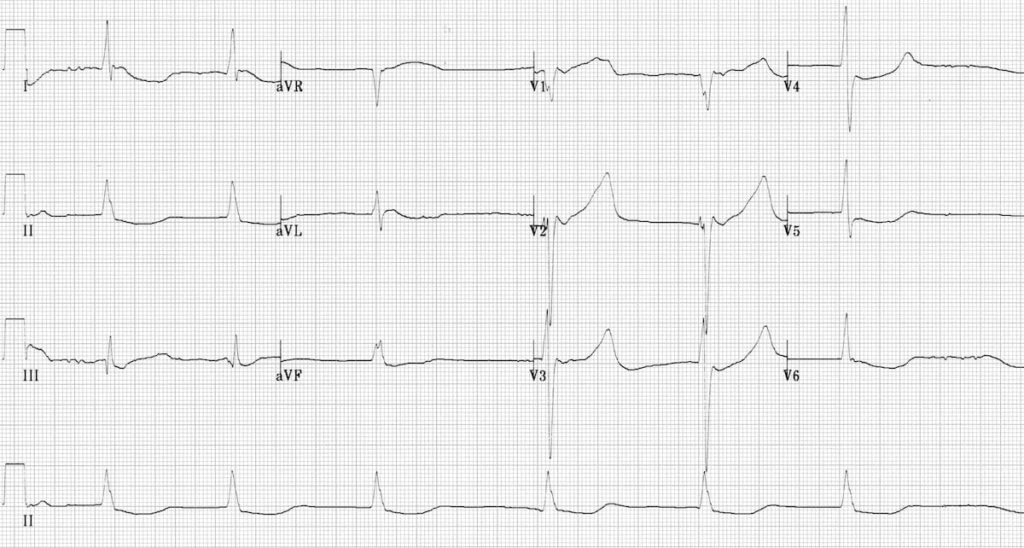
Example 3
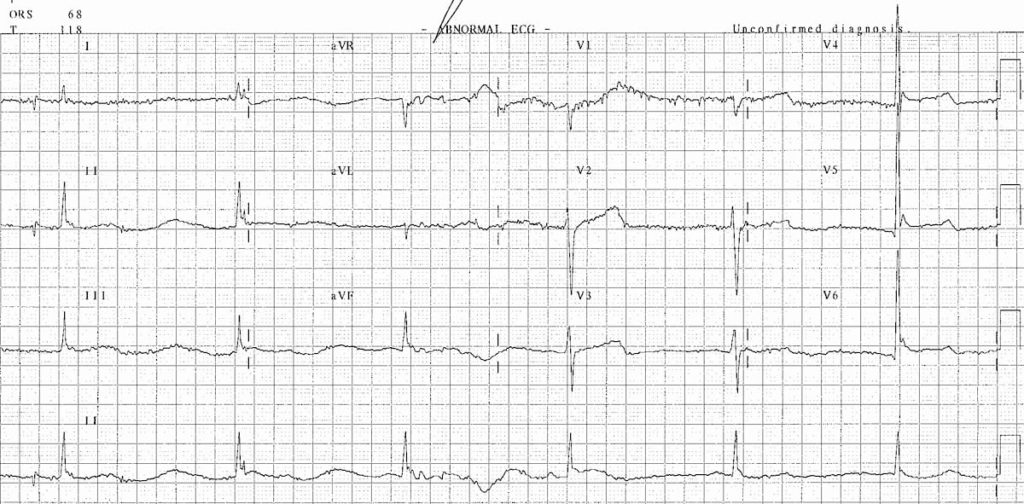
- ECG with the classic features of hypothermia: bradycardia, Osborn waves and shivering artefact.
Osborn Waves
The Osborn wave (J wave) is a positive deflection at the J point (negative in aVR and V1).
- It is usually most prominent in the precordial leads.
- The height of the Osborn wave is roughly proportional to the degree of hypothermia
Example 4
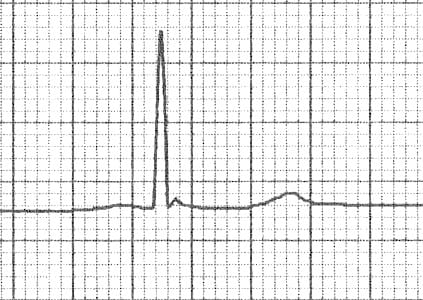
- Subtle J waves in mild hypothermia [Temp: 32.5°C (90.5°F)]
- The height of the J wave is roughly proportional to the degree of hypothermia
Example 5
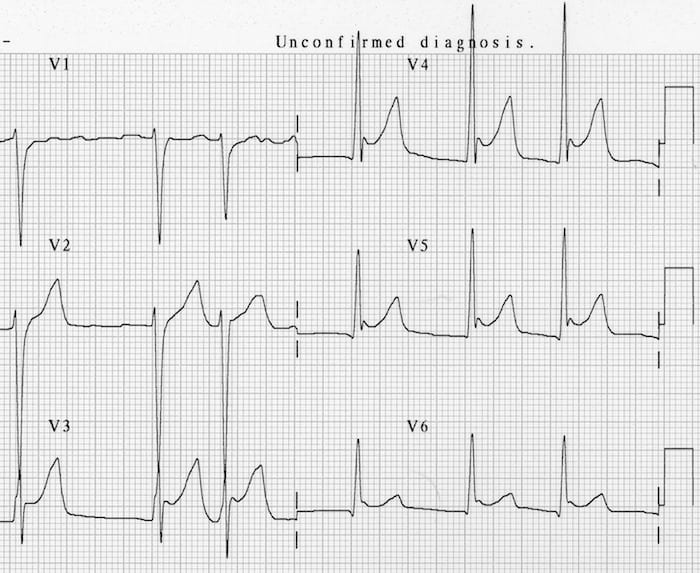
Example 6

Example 7
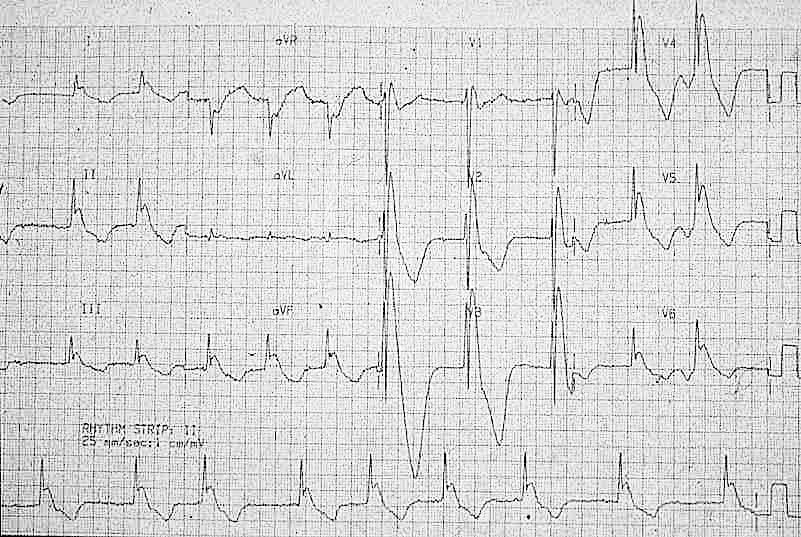
QT Prolongation
Example 8
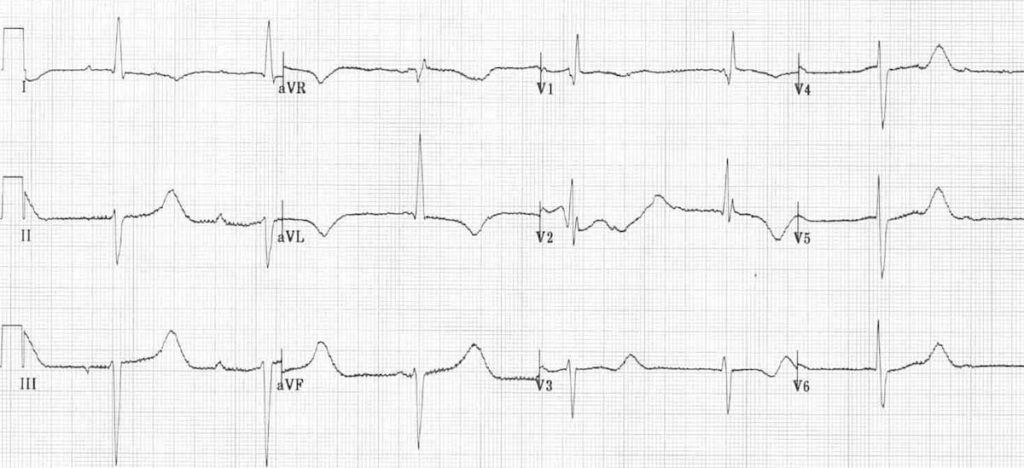
Shivering Artefact
- Shivering artefact is seen as a “fuzziness” of the ECG baseline
- It is not specific to hypothermia and may be seen with other conditions associated with tremor (e.g. Parkinson’s disease)
Example 9
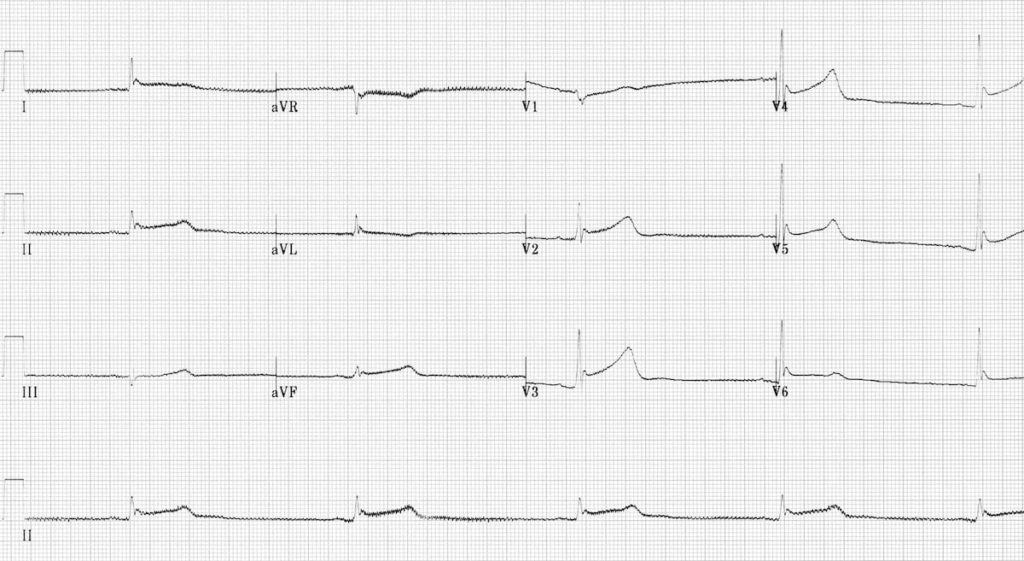
- Shivering artefact in a patient with hypothermia (note also the Osborn waves, bradycardia, prolonged QT)
Related Topics
References
- Slovis C, Jenkins R. ABC of clinical electrocardiography: Conditions not primarily affecting the heart. BMJ. 2002 Jun 1;324(7349):1320-3
Advanced Reading
Online
- Wiesbauer F, Kühn P. ECG Mastery: Yellow Belt online course. Understand ECG basics. Medmastery
- Wiesbauer F, Kühn P. ECG Mastery: Blue Belt online course: Become an ECG expert. Medmastery
- Kühn P, Houghton A. ECG Mastery: Black Belt Workshop. Advanced ECG interpretation. Medmastery
- Rawshani A. Clinical ECG Interpretation ECG Waves
- Smith SW. Dr Smith’s ECG blog.
- Wiesbauer F. Little Black Book of ECG Secrets. Medmastery PDF
Textbooks
- Zimmerman FH. ECG Core Curriculum. 2023
- Mattu A, Berberian J, Brady WJ. Emergency ECGs: Case-Based Review and Interpretations, 2022
- Straus DG, Schocken DD. Marriott’s Practical Electrocardiography 13e, 2021
- Brady WJ, Lipinski MJ et al. Electrocardiogram in Clinical Medicine. 1e, 2020
- Mattu A, Tabas JA, Brady WJ. Electrocardiography in Emergency, Acute, and Critical Care. 2e, 2019
- Hampton J, Adlam D. The ECG Made Practical 7e, 2019
- Kühn P, Lang C, Wiesbauer F. ECG Mastery: The Simplest Way to Learn the ECG. 2015
- Grauer K. ECG Pocket Brain (Expanded) 6e, 2014
- Surawicz B, Knilans T. Chou’s Electrocardiography in Clinical Practice: Adult and Pediatric 6e, 2008
- Chan TC. ECG in Emergency Medicine and Acute Care 1e, 2004
LITFL Further Reading
- ECG Library Basics – Waves, Intervals, Segments and Clinical Interpretation
- ECG A to Z by diagnosis – ECG interpretation in clinical context
- ECG Exigency and Cardiovascular Curveball – ECG Clinical Cases
- 100 ECG Quiz – Self-assessment tool for examination practice
- ECG Reference SITES and BOOKS – the best of the rest
ECG LIBRARY
Emergency Physician in Prehospital and Retrieval Medicine in Sydney, Australia. He has a passion for ECG interpretation and medical education | ECG Library |
MBBS DDU (Emergency) CCPU. Adult/Paediatric Emergency Medicine Advanced Trainee in Melbourne, Australia. Special interests in diagnostic and procedural ultrasound, medical education, and ECG interpretation. Co-creator of the LITFL ECG Library. Twitter: @rob_buttner

